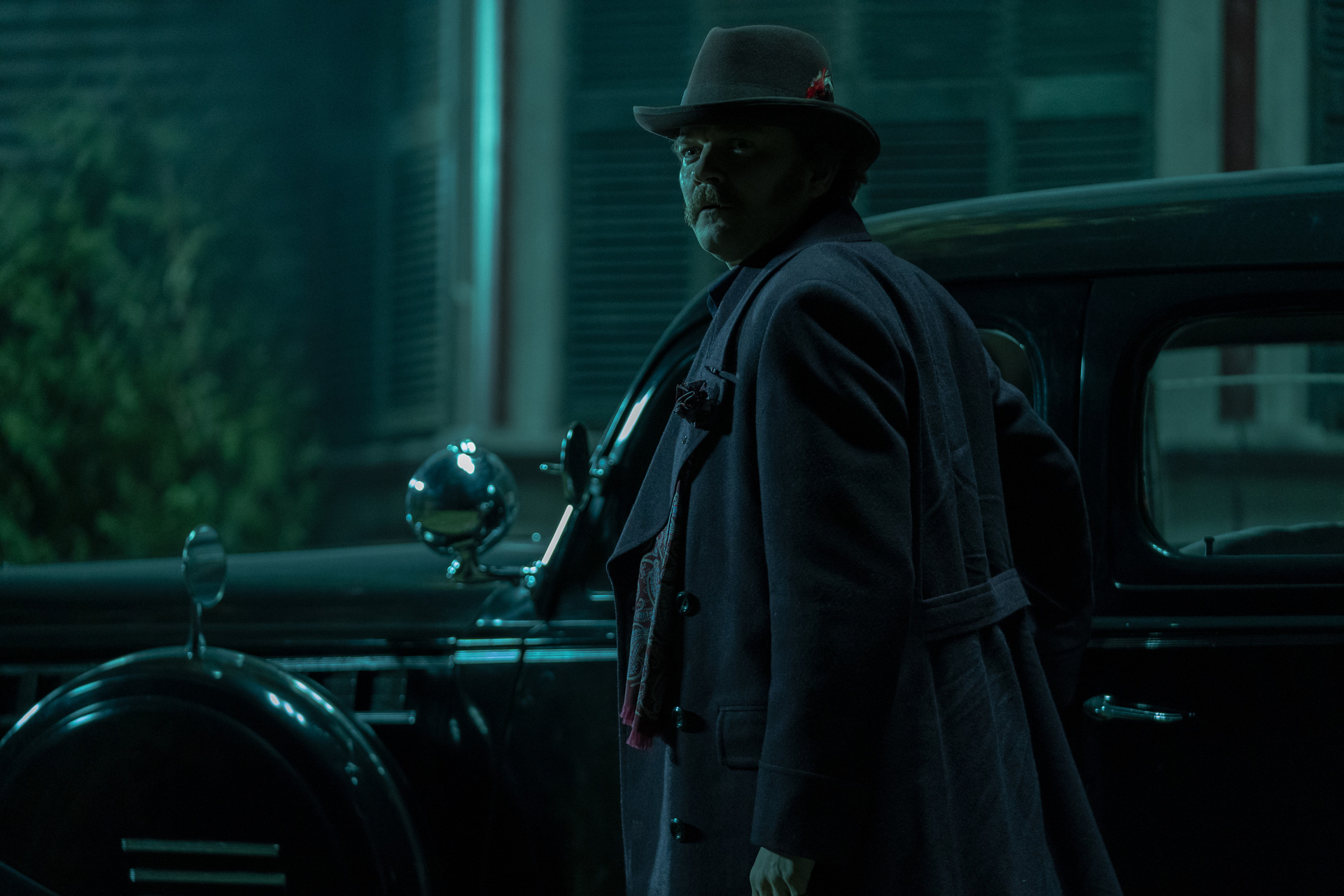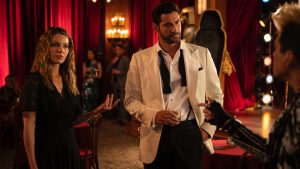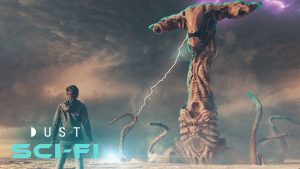
“The elusive Mr. Barlow.” That’s how characters in Stephen King‘s 1975 novel ‘Salem’s Lot describe the proprietor of the new antique store opened in the small Maine town Jerusalem’s Lot, shortened to ‘Salem’s Lot or even the Lot by locals. Although the co-owner Richard Starker makes regular, and memorable, appearances in the shop with smarmy realtor Larry Crockett, and outside the creepy Marston house where the two newcomers supposedly live, Barlow remains absent.
Even when Barlow finally introduces himself in the novel, he remains obscure. “The shadow had a manlike form, but there was something…something…” observes the narrator, focalizing through the perspective of repairman Corey Bryant. “The form shifted and came from the shadows. In the faint light, Corey saw a middle-aged man with a black mustache and deep, bright eyes.”
Although Corey observes that Barlow is a foreigner, whose “cheekbones were high and Slavic, his forehead pale and bony, his dark hair swept straight back,” Barlow is unmistakably a man, not a beast. He delivers an erudite speech about the vitality of America, the lack of want or hunger that Americans enjoy, before setting his teeth into Corey’s neck.
That’s because, of course, Barlow is a vampire, one who has come to feast on the remains of ‘Salem’s Lot, which has already started to die. The idea of a real vampire appearing in the present drives the novel ‘Salem’s Lot. And yet, it’s an aspect missed by most adaptations, including the new movie version by Gary Dauberman.
A Thoroughly Unmodern Monster
The confrontation between Corey and Barlow underscores the appeal of King’s novel. Corey is a modern American man, a citizen of a small-town where everyone knows everyone else’s business, including the fact that he’s sleeping with a married woman, and of a country not even 200 years old yet. Barlow is the Old World, a man who recently presented himself as Austrian nobleman Kurt Breichen, but whose history goes back even further. He has manners and knowledge, and desires that run further back than even George Washington and the other founders that Corey and his townspeople will soon celebrate.
Yet, so many adaptations of ‘Salem’s Lot ignore this aspect of King’s story. In the well-regarded 1979 TV miniseries directed by Tobe Hooper, James Mason played the sophistication and classical manners of Barlow’s familiar, Mr. Starker. But when Barlow finally appears in the series (portrayed by Reggie Nalder), he does nothing more than squeal and growl. A bald, pointy eared creature whose mouth full of sharp teeth preclude speech, Hooper’s Barlow has more in common with Max Schreck’s monster in Nosferatu: A Symphony of Horror than the regal bloodsuckers portrayed by Bela Lugosi or Christopher Lee.
The latest adaptation from writer/director Gary Dauberman follows suit. Dauberman gives viewers glimpses of his Barlow (Alexander Ward) throughout the first half of the movie as a pale face briefly protruding from the shadows or creature stalking down a staircase spied through a hole in a sack. When he finally appears in full, Dauberman’s Barlow is yet another Nosferatu in a black cloak.
No Faith in the Material
Dauberman does allow Ward a few lines of dialogue, but they somehow only heighten the vampire’s feral nature. He delivers one of his most notable bits of dialogue while facing down doubting Father Callahan (John Benjamin Hickey), whose disbelief renders the cross he wields useless. “Sad to see man’s faith fail,” Barlow snarls after a hideous cackle, the edges of his teeth highlighted by the blotches of blood across his chin and chest.
Instead of lending some recognizable humanity to Barlow, the lines just make him seem more animal and distant. Barlow’s scenes work to make ‘Salem’s Lot feel like a town besieged by an ineffable evil, not unlike Derry from It or Castle Rock in Needful Things. But where the dapper Leland Guant of the latter story represents the citizen’s darkest desires, drawing forth the darkness already inside of them, the monstrous Barlow of Dauberman and Hooper’s adaptations is something wholly other.
Contrast that approach to the way that King portrays Barlow’s confrontation with Callahan in the novel. In both versions, the two face off in the kitchen of the Petries, whose son Mark (portrayed by Jordan Preston Carter in the latest version) eventually helps writer Ben Mears (Lewis Pullman) defeat Barlow and the citizens he turns.
In the novel, there’s real playfulness to Barlow toying with Callahan, as the vampire teases his victim “good-naturedly in his rich, powerful voice.” Callahan has enough faith to initially drive Barlow into a corner with his cross. But instead of just hissing like a trapped rat, Barlow acts strategically, grabbing Mark and warning the priest to stay back under threat of killing the boy. Barlow proceeds to bargain with Callahan for Mark, asking, “Should I reprieve the boy, save him for another night?”
Even when Barlow prepares to kill Callahan, after letting the boy run away, King accentuates the regal nature of the villain. “Barlow seemed to grow taller. His hair, swept back from his brow in the European manner, seemed to float around his skull,” King writes. “He was wearing a dark suit and a wine-colored tie, impeccably knotted, and to Callahan he seemed part and parcel of the darkness that surrounded him. His eyes glared out of their sockets like sly and sullen embers.”
Instead of tossing out a one-liner about failing faith, the novel’s Barlow delivers a diatribe pitting his dark religion against the devotion that Callahan no longer has. “Come, false priest. Learn of a true religion. Take my communion,” Barlow calls before corrupting Callahan by way of drinking his tainted blood.
A Darker Threat
Although it rarely gets mentioned as much as the 1979 movie, the 2004 TNT adaptation does at least get Barlow right. Directed by Mikael Salomon, the 2004 Salem’s Lot stars Rob Lowe as Mears, James Cromwell as Callahan, and, crucially, Rutger Hauer as Barlow. Hauer’s Barlow has class and manners, even when going on the attack. Hauer plays Barlow as someone whose unbelievably long life precludes any respect for the fading ‘Salem’s Lot, whose demise is a barely noticeable blip in history, not the death of a national dream that its citizens expect.
That 2004 adaptation understands the power of King’s book, as represented by the conflict between Callahan and Barlow. Barlow isn’t just a beast that Callahan wards away with whatever faith available to him. He’s a a deeper evil in human form, and that humanity allows him to speak to the very desires of the town. As the institutions that once made Salem’s Lot a vibrant place fade away, institutions like the church that Callahan claims to represent, Barlow offers something older, richer, and permanent. The 2004 film has many other problems, but the actor giving Barlow gravitas is not one of them.
Unfortunately, that gravitas is lost in the unappealing monster of Dauberman’s bigger and presumably more expensive movie, which continues a trend of failing to find Salem’s Lot‘s most resonant theme. Like the residents of the Lot itself, the appeal of this novel remains lost and forgotten in shadow.
Salem’s Lot is streaming now on Max.
The post Salem’s Lot Adaptations Keep Getting Stephen King’s Vampire Wrong appeared first on Den of Geek.






